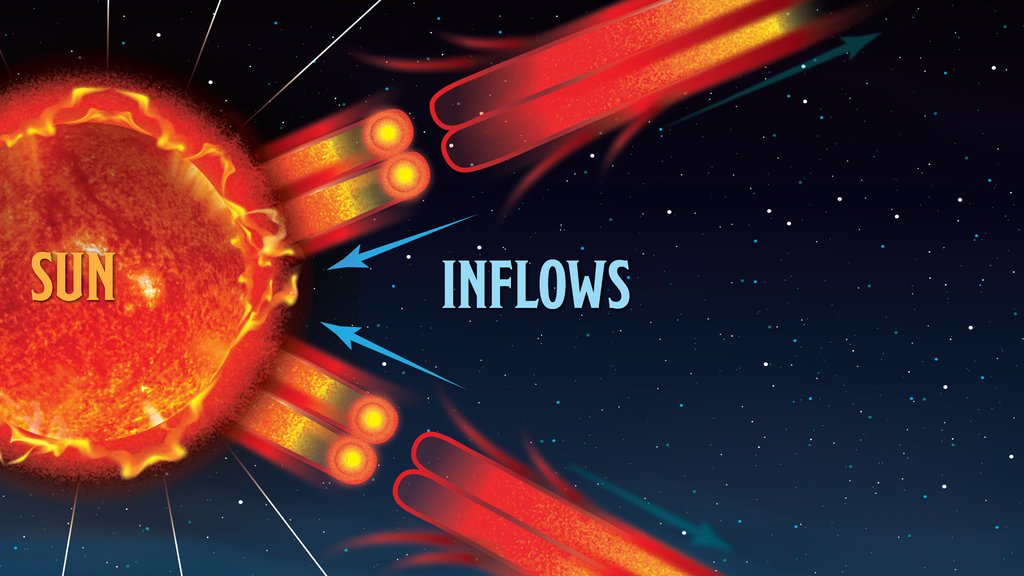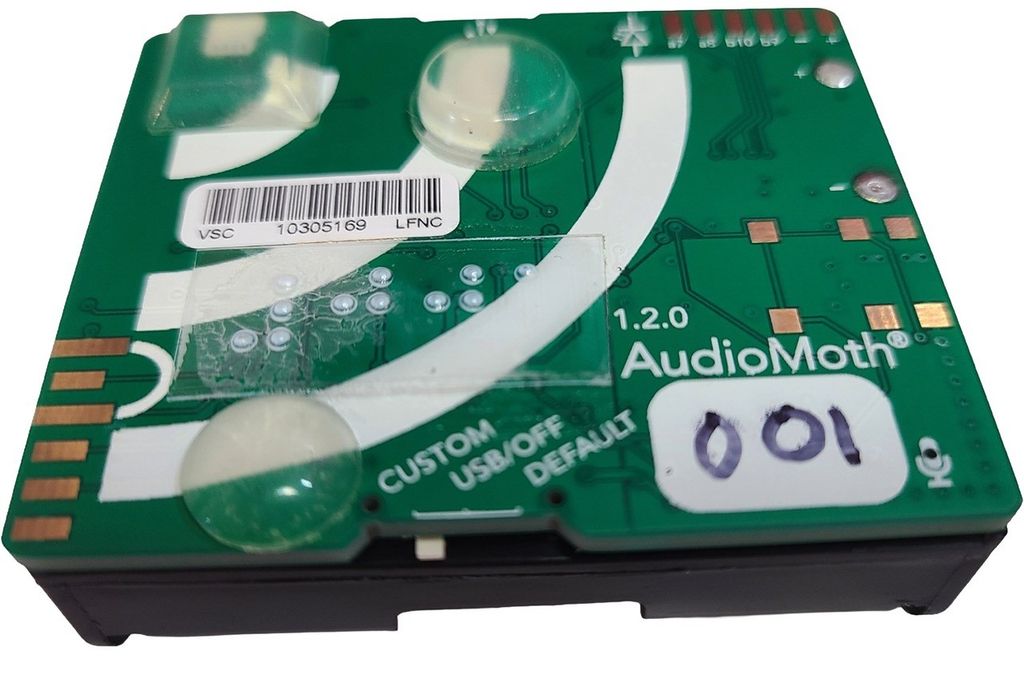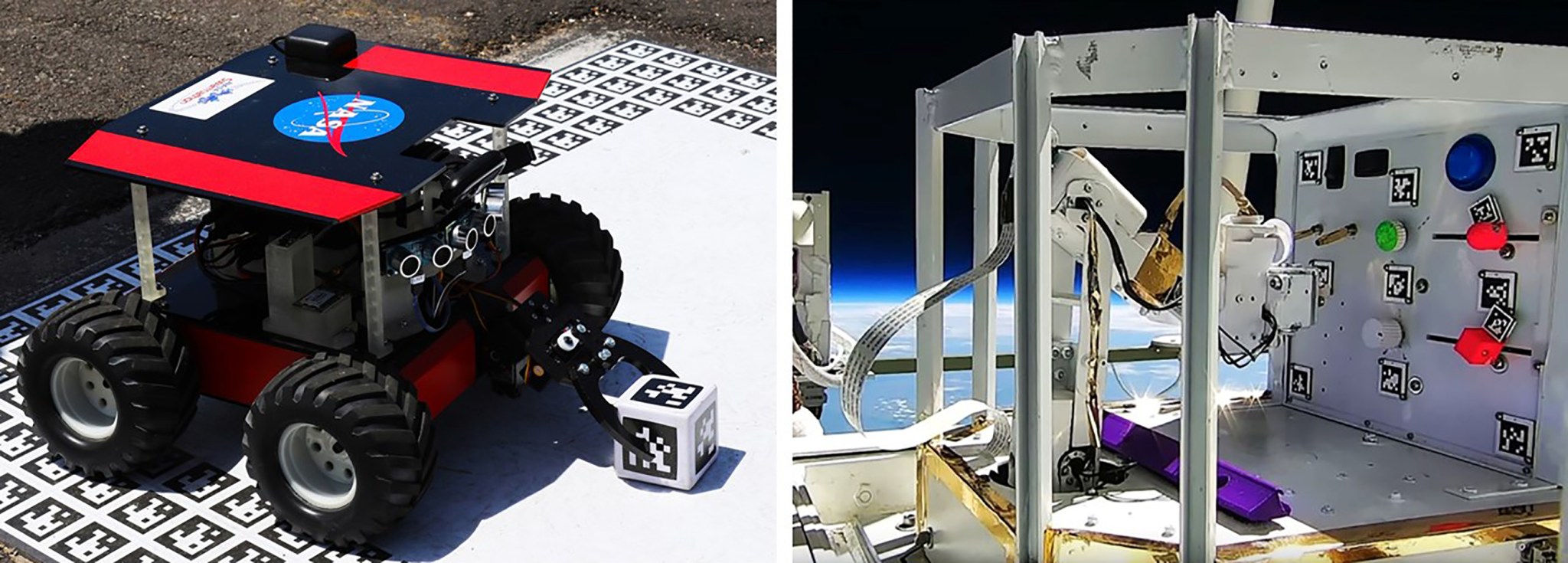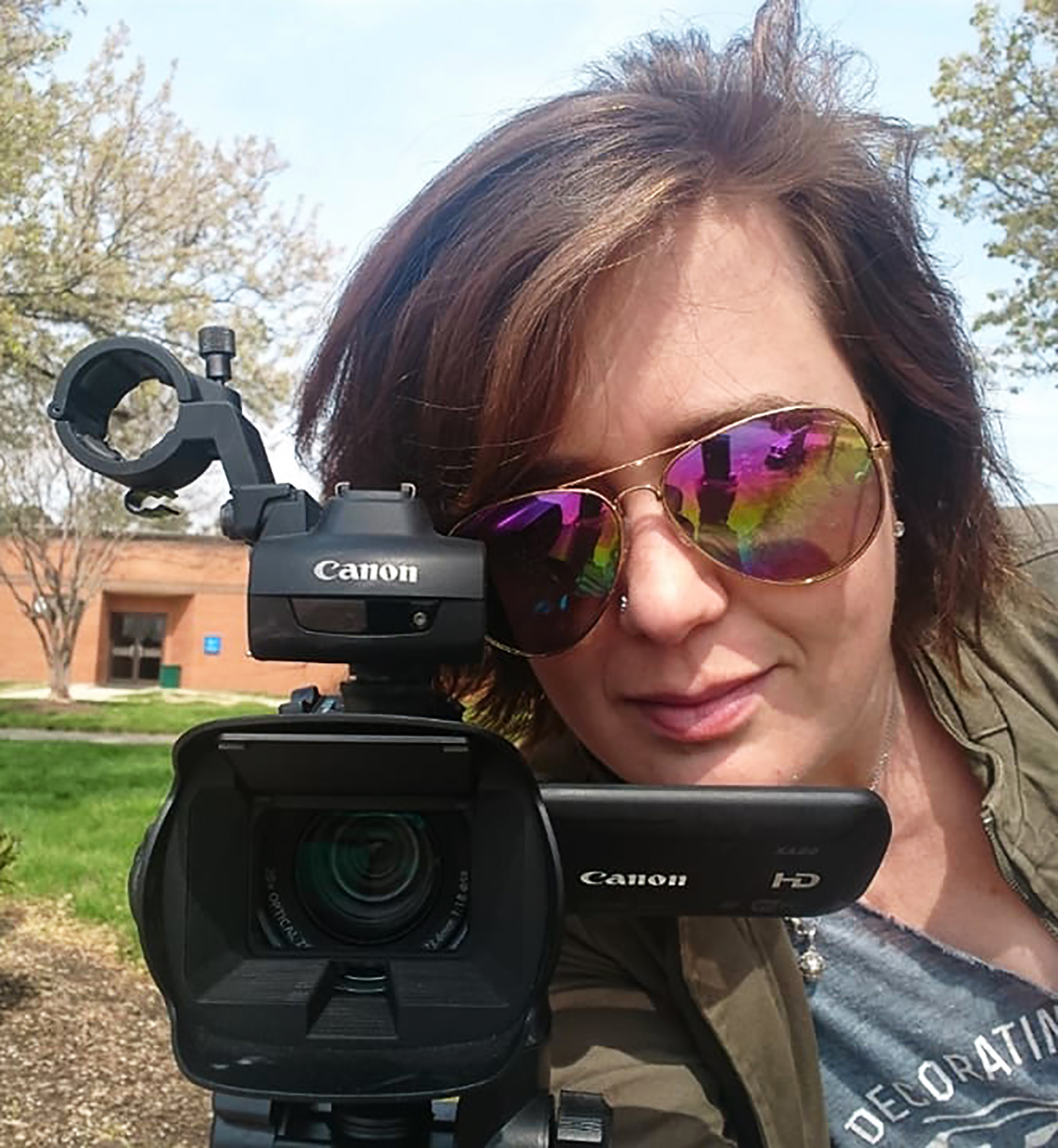By Bob Granath
NASA’s Kennedy Space Center, Florida
Community college students who participated in NASA’s Swarmathon robotic programming competition at the agency’s Kennedy Space Center in Florida recently contributed to a program that tests technology at the edge of space. Their efforts may help astronauts find resources while exploring the Moon or Mars and could contribute to robotic satellite servicing missions.
The students from Durham Technical Community College in North Carolina participated in the High Altitude Student Platform, or HASP, upper atmospheric balloon program of NASA’s Wallops Flight Facility in Virginia.
HASP is a platform set up so teams can mount payloads on a gondola launched into near space on a balloon, and is funded by the agency’s Minority University Research and Education Project (MUREP). The payloads are conceived, designed and built by college and university students and can achieve a variety of goals.
Dan Koris, team lead for Durham Tech’s participation in both the Swarmathon and HASP projects, noted that it started with the Swarmathon.
“The skills I learned and gained, opportunities I had, led to participation in this year’s HASP project,” he said.
The HASP program was established to provide flight opportunities on a helium-filled balloon carrying multiple payload experiments to near-space altitudes for up to 20 hours.
Fellow Durham Tech students Meredith Murray and Soham Pai Kane are the other members of the Swarmathon team who participated in the HASP effort.
Earlier this year, the Swarmathon competition involved programming Swarmies, small robotic vehicles. The robots searched arenas, looking for “resources” in the form of small cubes with “AprilTags” similar to bar codes.
“During the Swarmathon, students gain experience with code integration, hardware testing, software engineering, project management and team collaboration critical to their future success in robotics and computer science,” said Theresa Martinez, MUREP STEM Engagement manager in Kennedy’s Academic Engagement Office. “Their efforts will further advance ‘swarm robotics’ technology for future NASA space exploration missions to the Moon and Mars. We hope some students will return and help us.”
At the conclusion of this year’s robotics event, the 13-member Durham Tech team was presented the first-place award, recieving a $5,000 cash prize.
“Our rovers performed much better than I could have ever believed,” said Kane, who was a software engineer for the Swarmathon. “As perfectionists, we couldn’t help but worry about minor code ‘bugs’ that could keep us from our maximum potential. But, we were more than satisfied with the outcome.”
In addition to winning the physical competition, the Durham Tech team was awarded second place for their team technical report and first place for the team video.
As social media and communications coordinator for the group, Murray was the primary producer of the video documentary.
“This was a huge learning experience for me,” said Murray. “It involved a lot of trial and error. But we succeeded because we have good leadership that knows how to utilize people and talents. We have team members who are curious individuals that are willing to work a problem until solved.”
While working on their successful Swarmathon project, Koris, Murray, Kane and seven other HASP team members submitted an application to be a part of the 2018 balloon flight. Durham Tech’s team was one of only 13 colleges accepted to participate in this year’s event. The program is supported by the Wallops Balloon Program Office and the Louisiana Space Consortium at Louisiana State University.
“Our team built a robotic arm to perform tasks at 121,000 feet (23 miles) in the atmosphere,” said Koris, who has since graduated from Durham Tech and now is studying computer science at the University of Colorado-Boulder.
The group developed a device called Robotic Arm Manipulation and Materials Matching, or RAM3. They built and programed a robotic arm to perform basic kinetic tasks such as turning knobs and pushing buttons, as well as sealing and unsealing a Velcro strip.
For several years, engineers at Kennedy and NASA’s Goddard Space Flight Center in Greenbelt, Maryland, have been developing similar robotic satellite servicing technologies necessary to bring in-orbit inspection, repair, refueling and component replacement capabilities to Earth-orbiting spacecraft needing aid.
NASA’s HASP balloon launched on Sept. 4, 2018, from the Columbia Scientific Balloon Facility in Palestine, Texas. The Durham Tech team was able to follow RAM3’s progress with an on-board television camera.
“Watching our robotic arm move while more than 100,000 feet off the ground was amazing,” Murray said.
During the flight, the team allowed followers to monitor their progress with a Facebook blog.
“We’re flipping switches and turning knobs at 120,000 feet,” their post stated. “The HASP gondola has reached float altitude. RAM3 is still turning knobs and performing brilliantly.”
After the successful flight of RAM3, Koris also thanked those who led Kennedy’s Swarmathon effort, believing that experience helped with their HASP effort.
“Know that you are a part of this,” he said. “So, a huge thanks to your team!”





























